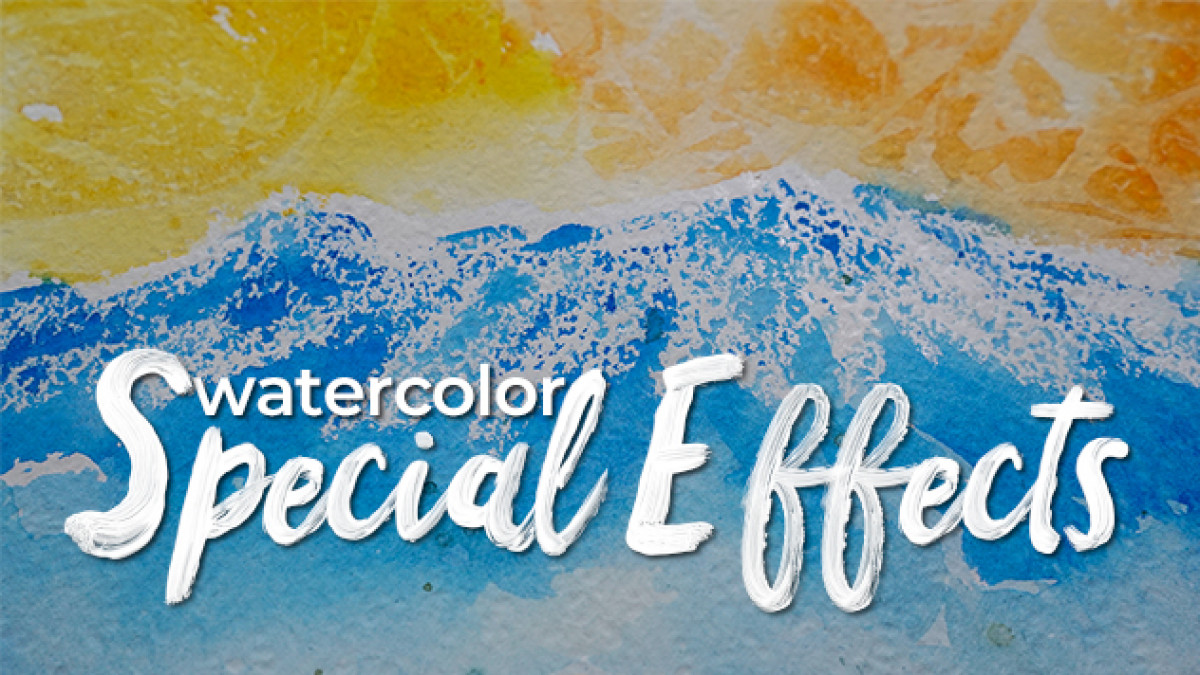Five Easy Watercolor Special Effects

Creating watercolor special effects is easy using a variety of everyday items; an artist’s imagination and playing around with the various textures.
The brush isn’t your only tool in painting - in fact, when you incorporate other tools and materials, you create all kinds of watercolor special effects. What’s more, most of the items needed for special effects can be found around the house - no need to make any large investments. With a few new tools and techniques in your belt, you can create new and interesting characteristics in your painting.
Key Takeaways
1. Creating watercolor special effects is easy using a variety of household items.
2. For creating textures considering using natural textures like rocks, trees, frost, grass, fur, and feathers.
3. An artist can create a variety of special effects by allowing their imagination to play with textures.
When to Use Watercolor Special Effects
Learning all the painting special effects out there is fun - but there should be a rhyme and reason to it. As you add special effects, consider the following:
- Avoid over-use of effects: Using too many special effects can make your painting look gimmicky and downright silly. Pick and choose when they’re appropriate to add.
- Add the textures of scenery and animals: Painting special effects are great to use for natural textures - think rocks, trees, frost, grass, fur, feathers, etc.
- Add effects when the painting is semi-dry: The best time to add effects is when your painting has just begun to dry and is losing shine. It should still be wet, but not soaking wet.
- Use your imagination: There are plenty of ways to use special effects - don’t let this list hinder you. Play around with it until you find what you like!
Watercolor Special Effects
- Water splashes
Adding speckles of water to your painting is one of the easiest special effects to start with. To try this, dab your fingers into a dish of water, then flick the water onto your painting. This is great for adding texture to fur or creating mist and clouds.
2. Salt
Coarse salt is best - grind it down between two flat surfaces, like using a jar on a table. This will give you varying sizes and shapes. Add it to your painting where you’d like to create stars, snowflakes, growth on trees, or leaves at a distance. Salt can take some time to interact with the paint, so be sure to give it some time to melt and push the paint away.
3. Credit cards
For sharp lines, use the corner or flat edge of a credit card. Applying pressure with your thumb, scrape the paint away from a given area. You can test if your painting is ready by doing a small area - if the paint sits where it’s been pushed away, rather than running back in to fill the paper, your paper is at the perfect temperature to continue. Use this technique to add trees or rocks.
4. Saran wrap
Saran wrap, when crumpled together, can create interesting lines that can then be pressed into your painting or pulled directionally. This is a great effect for creating frost or adding texture to a forest.
5. Wax
Paint cannot mix with wax, so it has to work around it. This allows you to choose areas to keep white or add negative space. Use a wax candle, crayon, or oil pastel to draw on your paper before painting, then see how the two work together. Note that unlike masking fluid, wax will remain on the paper.
Final Thoughts
The only limit to painting special effects is your imagination. Apart from those listed here, you might also try using bubble wrap, string, alcohol, tape, paper towels, sponges, rags, or aluminum foil on your painting. Play around with the various textures to learn how they can affect the paint on your paper. You never know what painting special effects you might get!
Interested in learning more?
Read "16 simple things to know to begin with watercolors and create successful paintings" by clicking here.
Check out our YouTube video on Watercolor Special Effects with Arts of Course instructor Jess Rice.
Download our free Top 10 Watercolor Tips by 200 passionate painters
Categories: : Watercolor Techniques, Watercolor tips
 Sylvie Peltier
Sylvie Peltier 